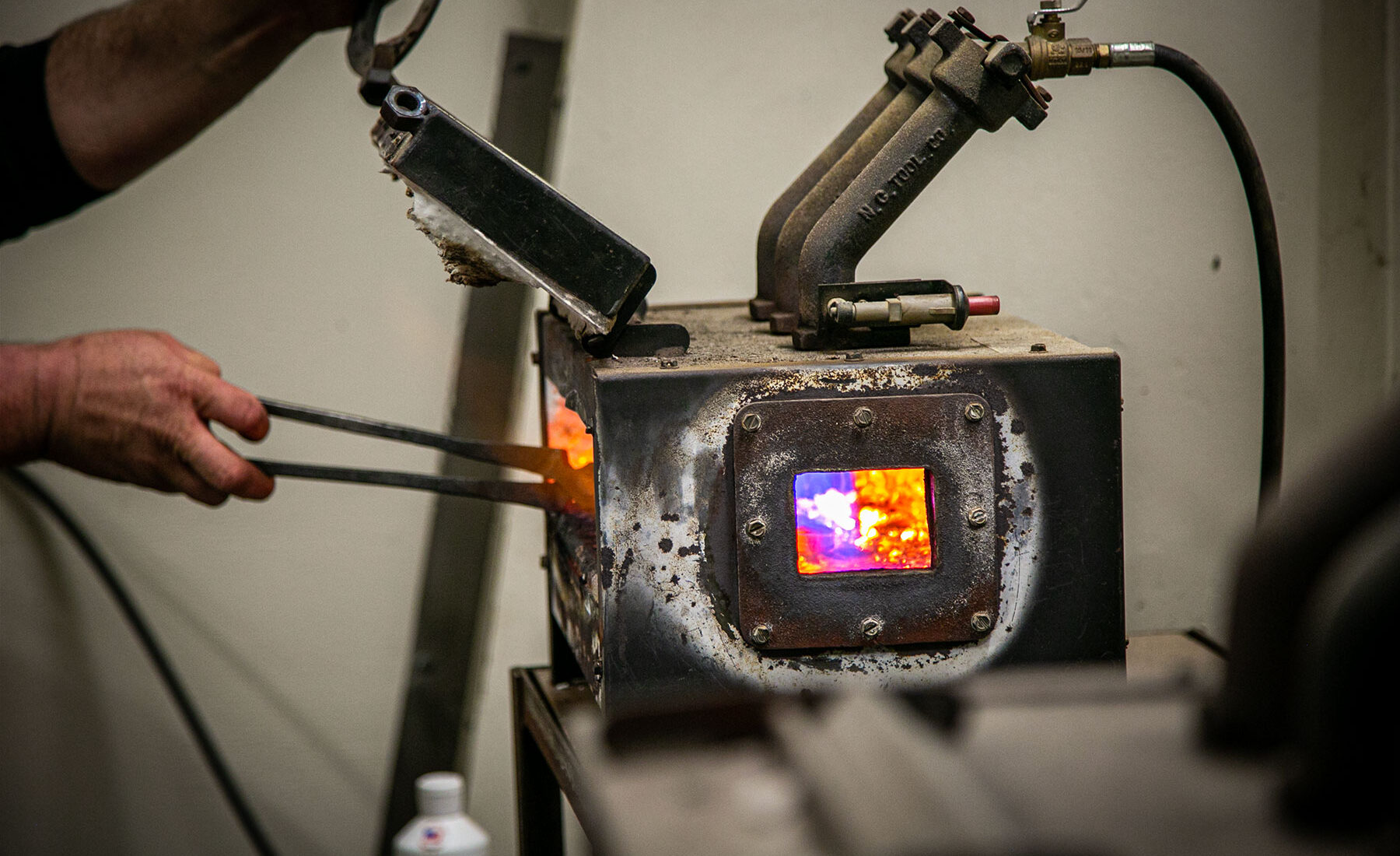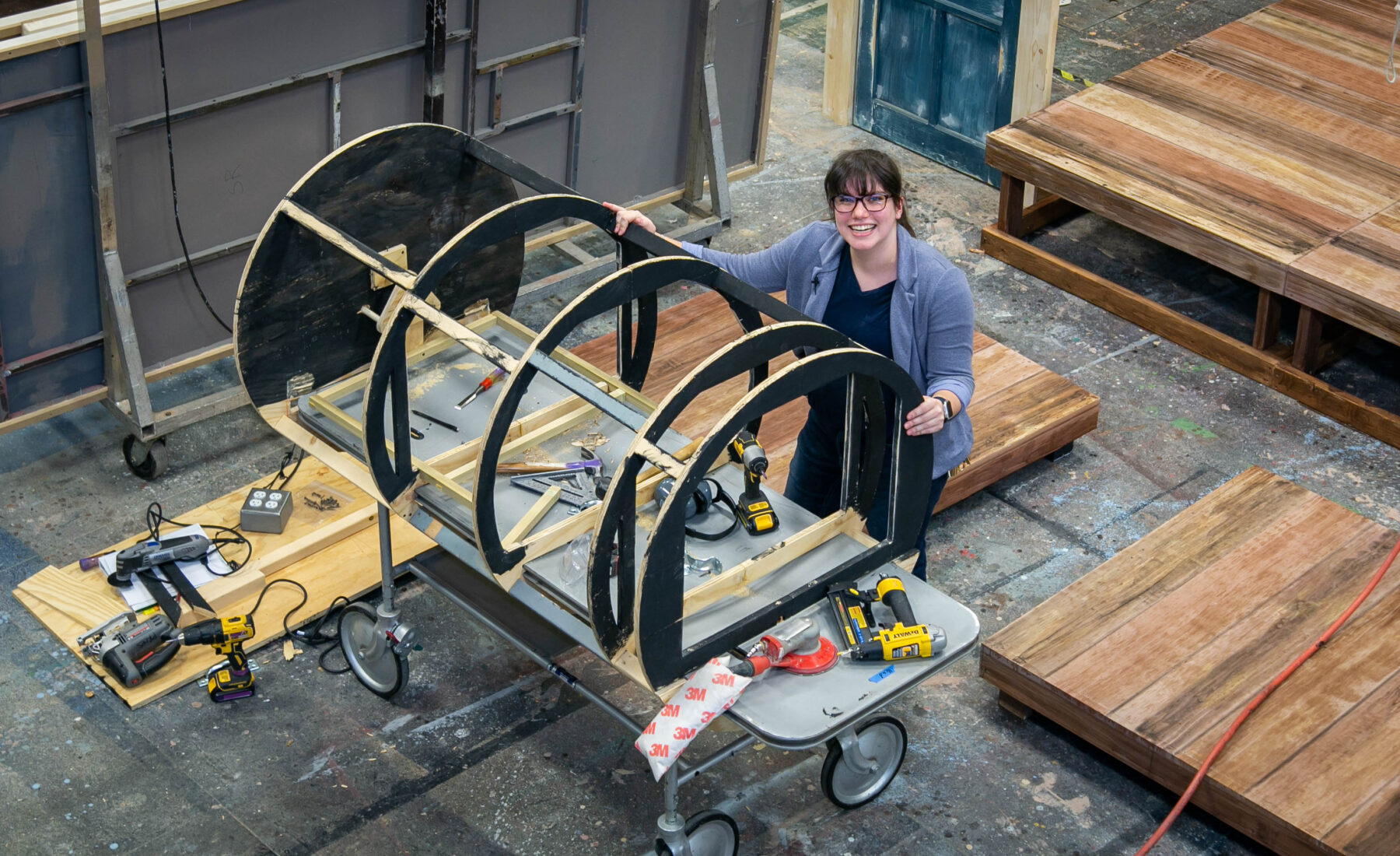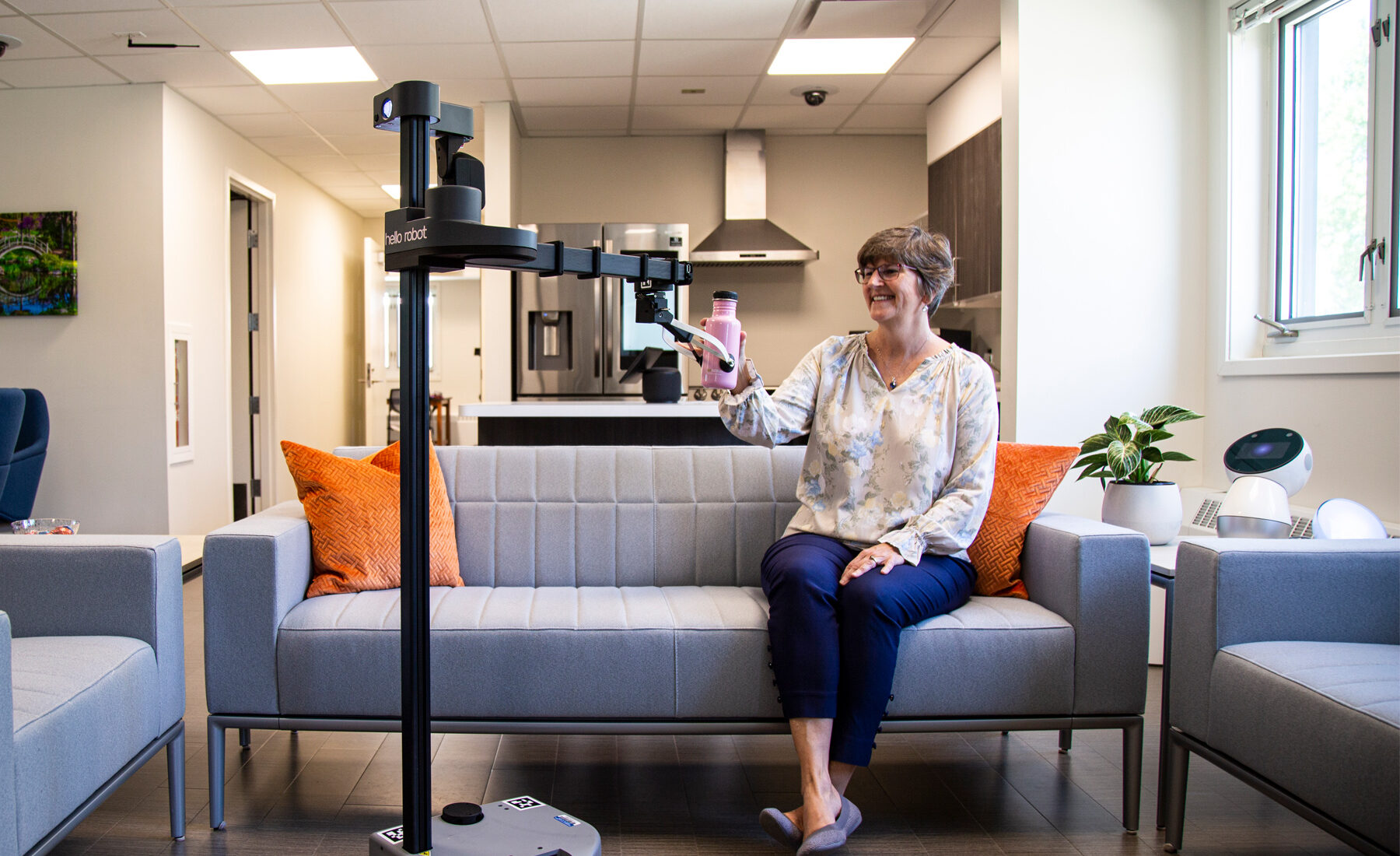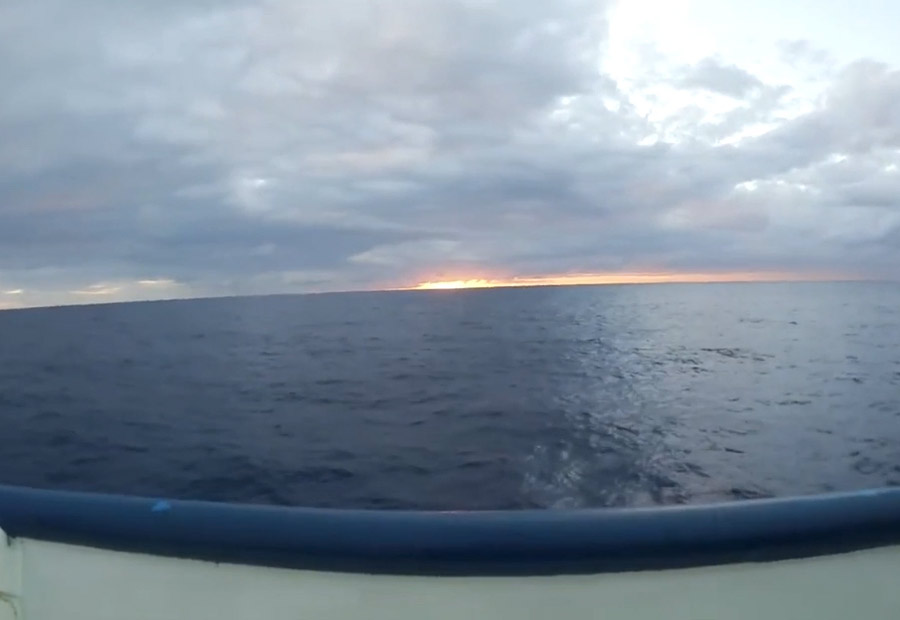
On Deck
We know more about the surface of Mars than we do about our sea floor. So truly, if you want to see something that no one’s explored before, the seafloor is where it’s at. We spend so much time thinking about the thirty percent of the planet that is land, but really, the majority of life on our planet is underwater.
Perhaps the most exciting thing for a geologist studying submarine volcanoes is the opportunity to see them in person. In 2016, I led a 30-day expedition to an underwater volcanic ridge in the Pacific Ocean. We left port in Manzanillo, Mexico and sailed on the Navy research vessel Atlantis, which has six on-board science labs, seafloor mapping sonar, and, of course, our diving vessel, Alvin.
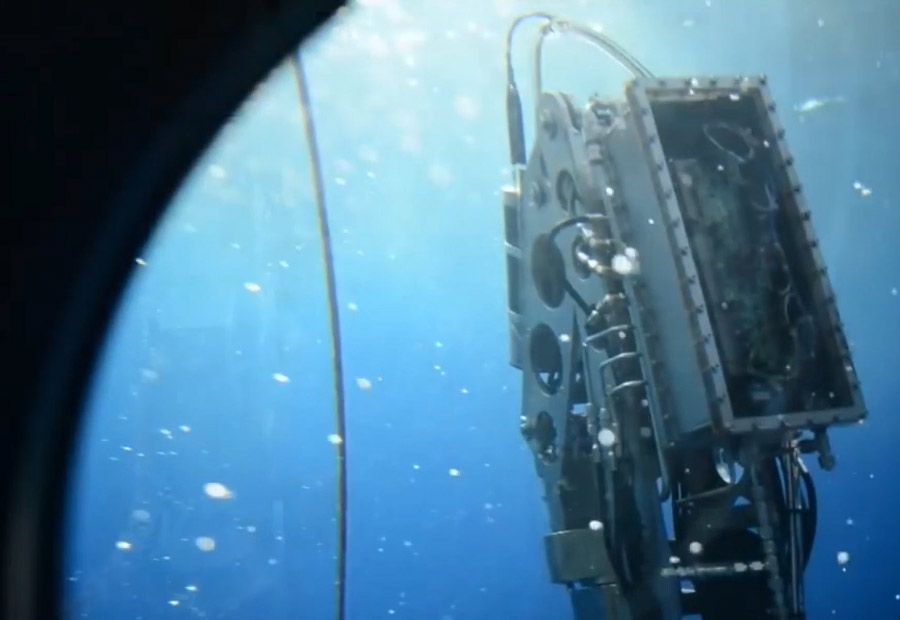
Floating in our Tin Can
The inside of Alvin only holds three people—two scientists and a pilot. That’s all that can fit in the six-foot diameter sphere.
Once we are lowered into the water, we are unhooked from the ship. The sub passively falls; it’s like dropping a titanium weight and letting it sink. All the lights are off to conserve as much energy as possible, so you’re surrounded only by the red glow of the safety lights. It took us about two hours to get to the bottom. The act of the air constricting makes it feel as if we are going up in altitude rather than sinking to the bottom of the ocean. Our ears begin to pop.
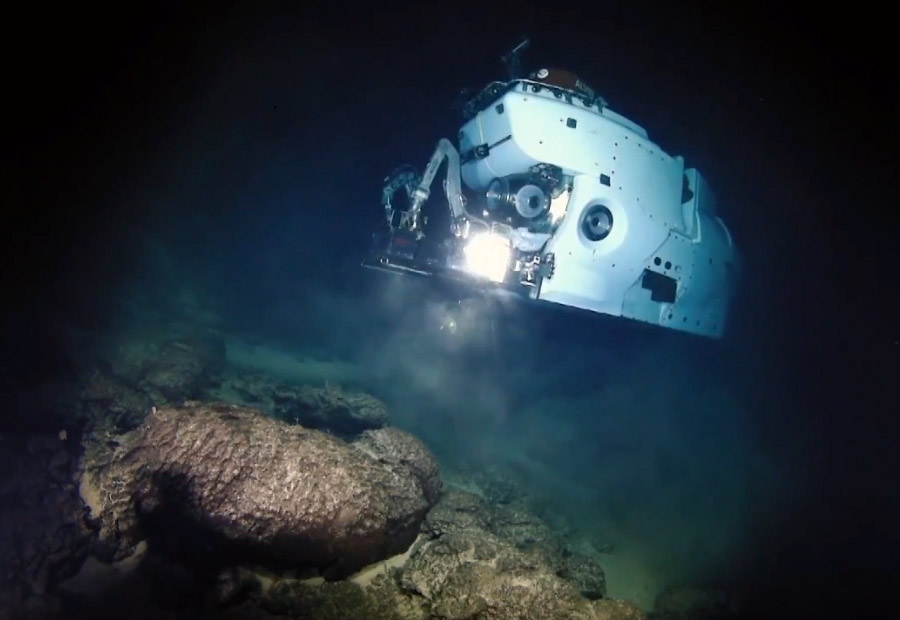
Alvin
Since 1964, Alvin has made some incredibly important dives—locating a lost hydrogen bomb, exploring the ruins of the Titanic, discovering hydrothermal vents that supported a robust, and previously unknown, biological community. This was my chance to be a part of that history.
Even though I had training and already spent time in Alvin, I was still anxious before my first dive. But I’ve been studying these features on the sea floor for almost twenty years, and I am determined to see them. As scientists, we can gain more insight when we see objects in person and understand their context than we can through satellite images.
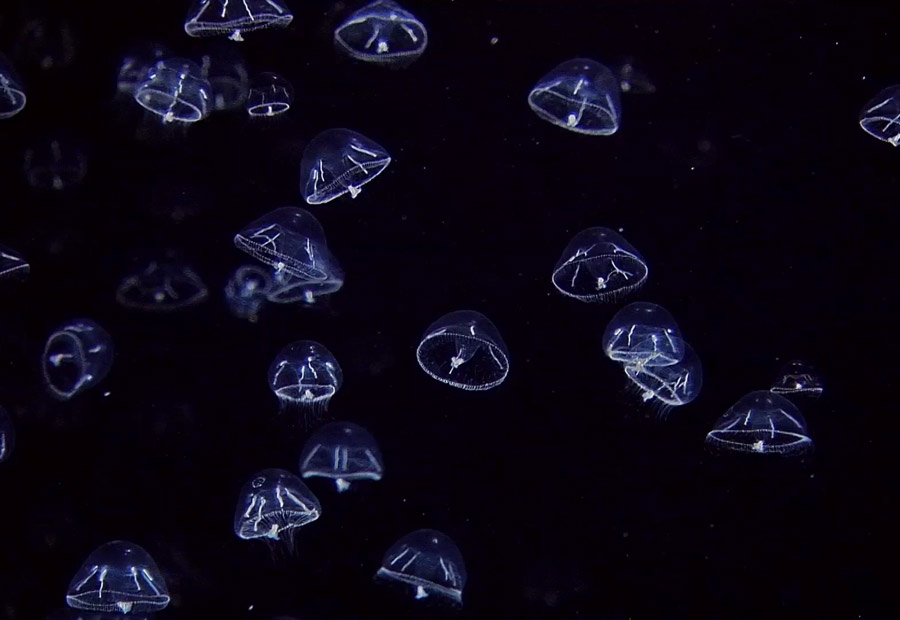
Dropping in the Darkness
It gets dark very quickly. As soon as you lose sunlight, the view from the portal is filled with bioluminescence. There is always something at the window. We see dozens of species of siphonophorae, which are swimming invertebrates that use green, blue, or red light to attract their prey. When jellyfish swim by, it is very similar to being out in a farm field midsummer and watching all the fireflies light up around you.
On the way down, we spend time testing equipment or discussing the samples we want to take, but we are constantly drawn to the windows, in awe of everything we can see.
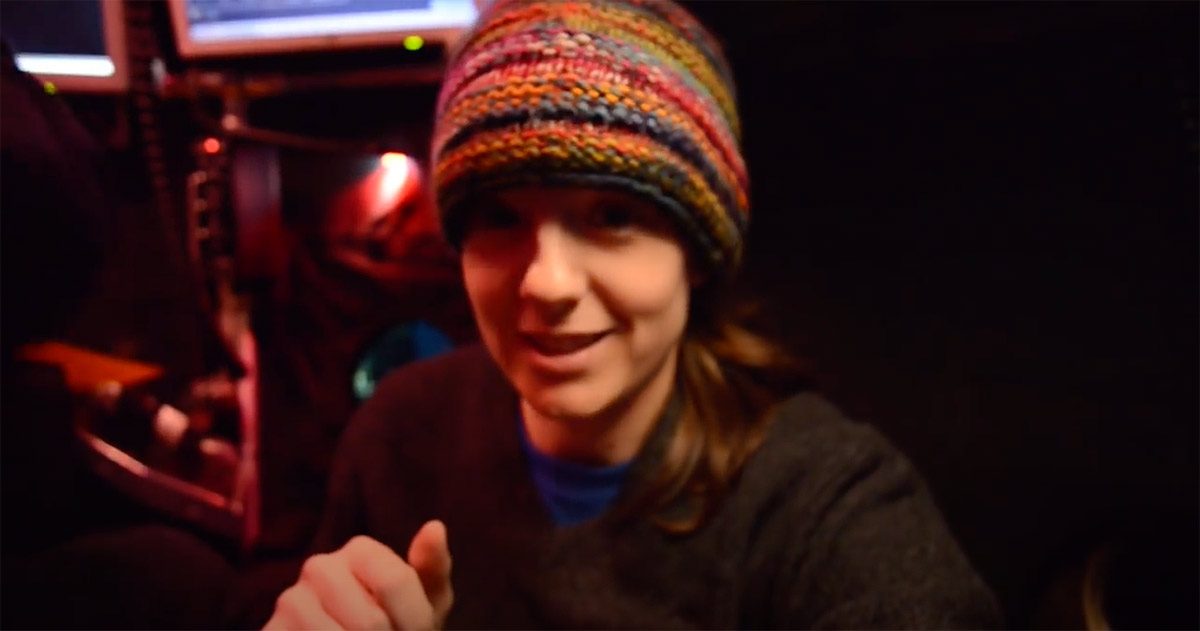
Layers and Layers
It is very cold at the bottom of the ocean, near freezing, and there’s no heat in the sub. We were diving in the equatorial Pacific, and the temperature on deck was already 80 degrees and humid by our 8 a.m. launch. As we float down and begin to lose light, the change in temperature causes condensation inside the sub. There are water droplets everywhere. Alvin has made over 5,000 dives safely—even survived an attack by a swordfish. I feel very safe, but it can still feel disconcerting to see water on the inside…
As we sink deeper, we put on more and more layers—wool hats, sweatshirts, three pairs of socks.
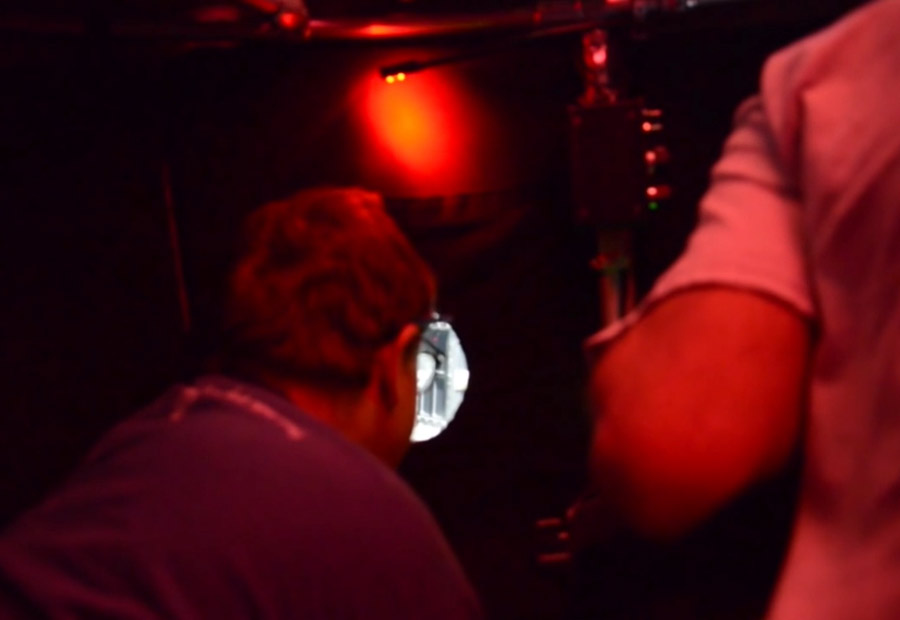
A Shift in Perspective
Diving three miles deep in the ocean changes your perspective. A lot of the work I do uses remote observations, whether it’s the sea floor or Mars or another planetary object. You fill in gaps on your own because you can’t see it. You can send cameras down to the sea floor or a probe to Mars and take samples and get images and videos, but there’s something wholly different about looking through the porthole, being in that three dimensional space and making decisions on the fly. That is really difficult to replicate when you have a video wall between you and what’s happening.
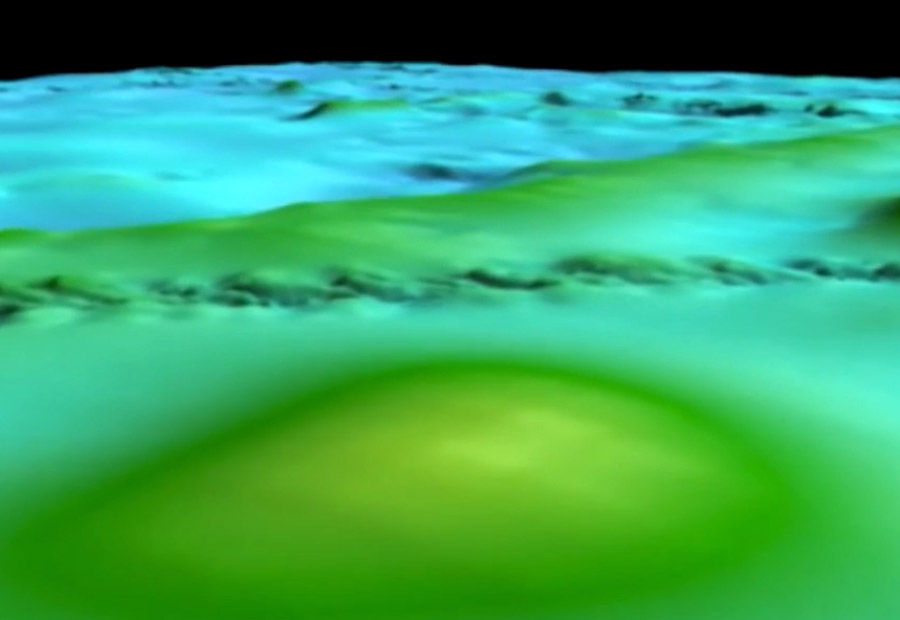
Surveying the Sea Floor
Roughly only 2-5% of the seafloor is properly mapped. Scientists have used satellite data to map most of the ocean floor, but it is only accurate to 1 kilometer, or over 3,000 feet. There was one volcano in particular I was really interested in, and when I ran to the science lab thinking the ship was about to sail right over the volcano, it wasn’t there. So, the satellite data isn’t perfect.
On the ship, we use multibeam bathymetric systems to map the area that we’re going to explore. These maps only give us details to 50 or 100 meters. That’s like being able to see the quad, but you don’t know what’s in it. You can only see sidewalks and trees. The night before we dive, we send down an underwater vehicle called Sentry, that provides even more detail. Now we can see the buildings on the quad or the people walking to class. Now we know where we want to go.
It takes a very coordinated effort to map these volcanoes that no one has ever mapped before and then dive on them in a submarine within hours to explore.
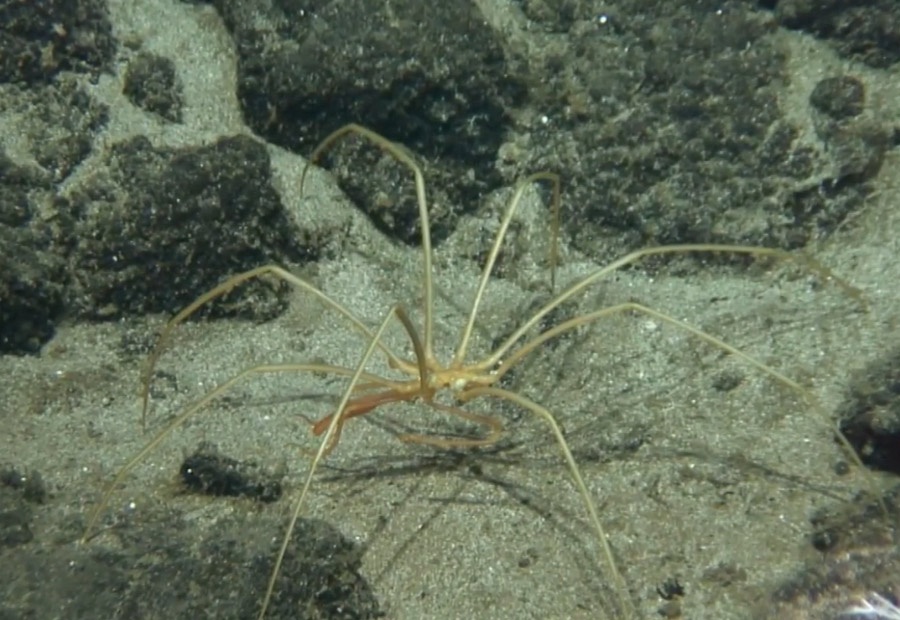
Another Planet
Don’t think you’re going to the bottom of the ocean to escape spiders. You won’t. There are spiders everywhere.
Once you start to explore the ocean, you realize there is a whole other planet under the water teeming with life. There is a symbiotic relationship between the volcanoes that we explored in the 8°20’N seamount and the thriving ecosystems at the bottom of the sea floor. The volcanoes provide heat and chemicals that sustain all the life around it.
Volcanoes are the windows inside our planet. The majority of Earth’s active volcanoes are underwater, so there are eruptions happening all the time in our oceans. And because oceanic crust is very thin compared to what we see on land, seafloor volcanoes almost directly link you to the mantle.
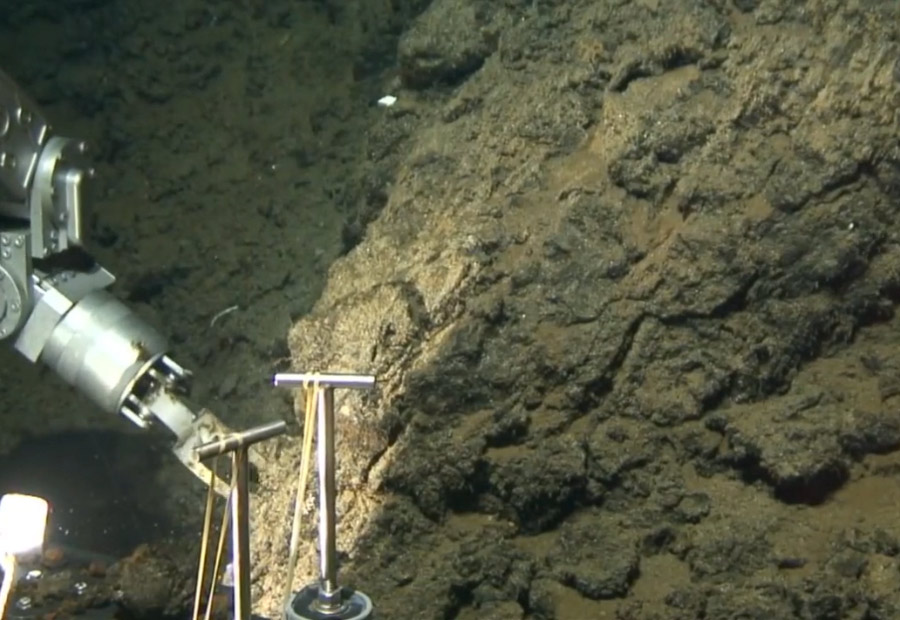
Collecting samples
We use a manipulator to grab samples of the volcanic rock. Being inside Alvin, watching through the portal, you’re able to notice things happening all around you. Maybe there’s some sediment flow or particulates that go off, or maybe the sample is so heavily sedimented you simply can’t grab it. If I were just on the ship watching a video of the pilot collecting the sample, I would miss all that other sensory input. As a scientist, it gives me a much fuller sense of what I’m seeing. I’m taking notes the entire time.
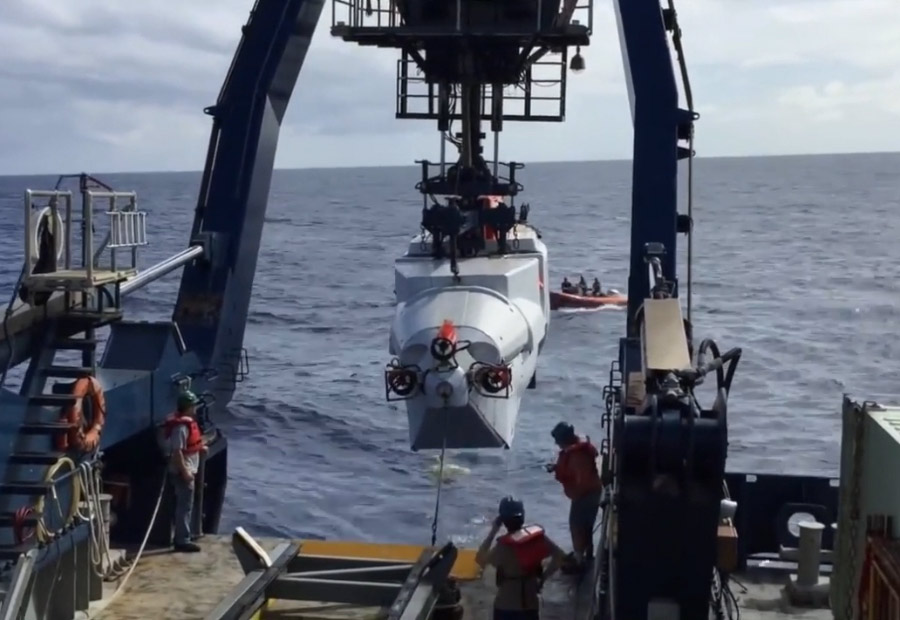
The Ride Home
Generally, we’re heading back up towards the top by about 3:30 p.m. and are back in time for dinner. The pilot drop weights from the external part of the sub, and we start to passively rise back up to the surface. And while there are currents, we are heavy enough to not be taken too off course. All the lights get turned off again, and a lot of people take this opportunity to nap. By that time, you’ve been so intensely focused for so long, that you’re exhausted. But I can’t nap because I’m too excited. I usually eat my lunch at that point, or listen to music and go over my notes.
The pilot tells those on the ship the location where we dropped our weights and from that, they know where you will likely surface. The crew all stand on deck with their binoculars, looking for Alvin to pop up out of the water.
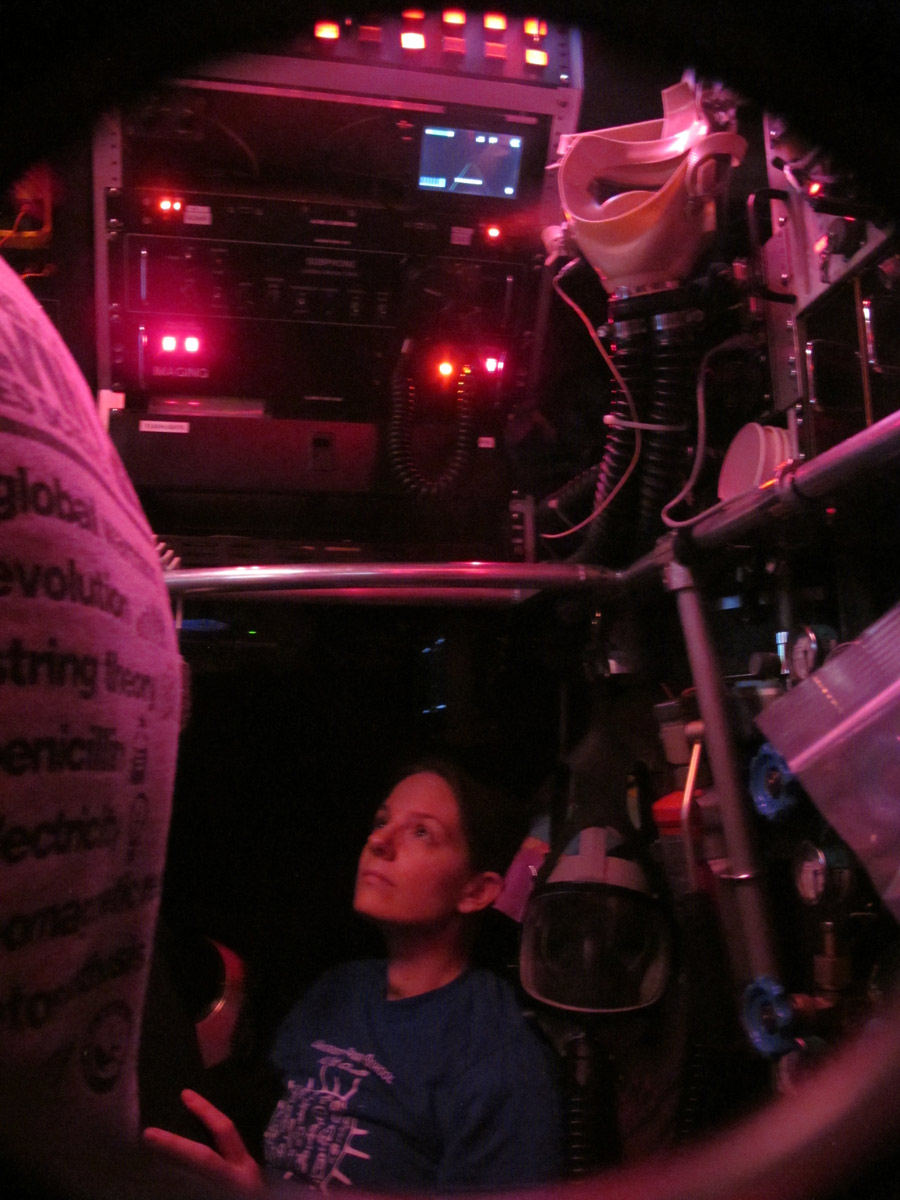
Seeing for the First (and Last) Time
It is truly amazing to think about, but we may be the only humans that ever see these volcanoes in person. There’s something sad about that, in a way, but it also speaks to the fact that there are so many areas on the seafloor that we still have to discover and explore.
Photo and video courtesy Patricia Gregg and the Woods Hole Oceanographic Institution.

